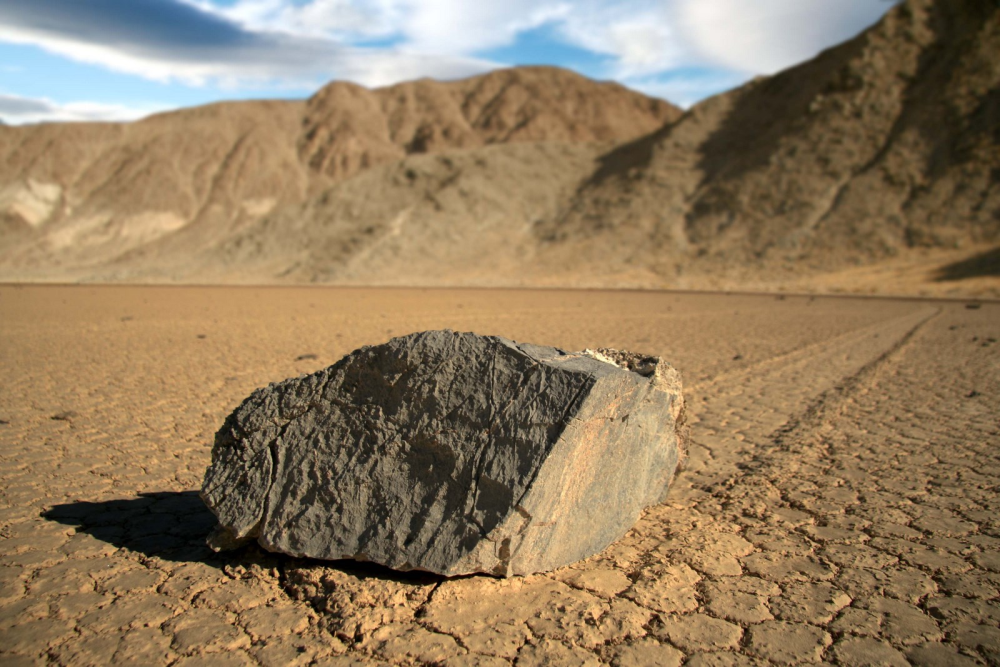Walk across the Racetrack Playa in Death Valley National Park and you might spot something strange. Here, enormous boulders can be seen tailed by what look like tire marks on a racetrack in the form of trails carved into the dry lakebed. These “sailing stones” can weigh up to 320 kilograms (700 pounds) at the extreme end, so who do they think they are zooming around the landscape?
ADVERTISEMENT
It’s a question that’s boggled minds since the 1940s, but in 2014, a study published in PLOS One set out to settle the mystery once and for all by strapping GPS trackers to some boulders and recording them with time-lapse cameras. It marked the first time the sailing stones had been recorded in motion, leading to a pivotal – albeit it very, very thin – discovery that could explain how they move around.
Death Valley’s Racetrack Playa is pretty brown and dusty in the summer months, but come winter a shallow winter pond forms across the playa. When it gets cold enough, the water freezes creating a thing layer of ice just 3 to 6 millimeters thick. Not much, but enough to create sheets that break apart and get pushed around by a gentle breeze.
“A necessary condition for the rock motion we observed is the existence of a playa pool deep enough to submerge the southern section of the playa, yet shallow enough to leave many rocks partly exposed at the pond surface,” wrote the authors. “Other repeating features of rock movement events that we observed include the presence of floating ice, temperatures and sunlight sufficient to create melt pools in the ice, and light breezes that are steady enough to drive floating ice.”

Now all they need to do is learn how to hurl insults and they can execute nature’s slowest drive-by.
The GPS trackers revealed that once they got moving, the sailing stones’ progress was a leisurely pace of around 2 to 5 meters (6.6 to 16.4 feet) per minute. Not exactly an F1 record, but surely up there with the fastest inanimate boulders on Earth.
The scientists behind the paper got to observe quite the race-rock rally when 60 rocks started moving simultaneously, some traveling as far as 224 meters (735 feet) over several events. It had been suspected that ice might play a part in the phenomenon of the sailing stones, but it was a revelation to discover how thin that ice had to be, and what mild winds were needed to set them in motion.
A thrilling race from the Death Valley National Park, but one you might struggle to rustle up a following for, as race seasons can be separated by years to decades due to insufficient rain and snowfall to form a deep enough winter pond. Perhaps the Animal Olympics holds more promise as a spectator sport.
Source Link: In Death Valley’s Racetrack Playa, 320-Kilogram "Sailing Stones" Move All On Their Own